It’s not just the Premiership that’s being taken over by foreign players. Over the last 10 years, UK-based ownership of the Top 150 food & drink suppliers has declined significantly as big multinationals have come to the UK to shop. In 2003 68% (102 companies) of the 150 were British-owned. In 2013, just 85 companies, or 56% of the total, are still British.
So, as the cream of British brands are snaffled up - only this week Lucozade and Ribena were sold to Japanese drinks giant Suntory - have the remaining UK players been left to fight over the scraps? Who have been the biggest winners and losers? And with the UK starting to see green shoots, how bullish are The Grocer food & drink 150 companies about the future?
Compiled for The Grocer by OC&C Strategy Consultants, the Food & Drink 150 shows, unquestionably, that meat and poultry producers are operating on wafer-thin, or non-existent margins. But on the branded and added-value side, many smaller, British-owned players are doing well on their home turf. And if there is a flipside to the internationalisation of the OC&C 150, it’s the fact that several of these British success stories now derive a significant and growing chunk of their revenue from exports.
“We’ve seen a real shift away from big branded in terms of profitability”
Will Hayllar, OC&C
Nor are the big, expansive multinationals having it all their own way. As revenues increased by an impressive-looking 6%, The Grocer/OC&C 150 found it tough to convert this into extra profits, as the revenue was generated mostly through commodity price increases. Operating margins fell a further 0.5ppts from 5.7% to 5.2% - their lowest level in 20 years. And the biggest surprise was that it was the larger branded players (with a turnover of £500m+) that struggled most. With sales growth slowing 3.3%%, large branded players saw a 1.2 ppt drop in margins (from 8.6% to 7.4%).
“We’ve seen a real shift away from big branded in terms of profitability,” says OC&C’s Will Hayllar. “Unbranded producers experienced a small [0.1ppt] reduction in margin, branded producers saw more of a drop [0.4ppt], and bigger branded producers saw the biggest drop of all. There’s a sense that they’re having to invest harder and harder to hold back competition from own label.”
Although a 0.8 percentage point fall may not sound like an awful lot, it’s a significant slump, says Hayllar.
“Average margins are around 8% to 9%, so a circa 10% decline is a serious change,” he adds. “If you look overall at the average index figures then, generally speaking, profitability doesn’t change by more than half a percentage point in most years.”
Sales growth for unbranded suppliers was significantly higher, at 7.6%, though the 8.5% growth of larger unbranded players was skewed by large acquisitions from Boparan and Greencore. And though small unbranded players grew sales by 6.2%, margins declined by 0.4ppts to 2.8%.
That makes smaller branded producers the star performers of this year’s OC&C Food & Drink 150. Sales growth was up 1.1ppts to 4.7%. And with margins of 8.3%, they were actually higher than for large branded players (7.4%), and the only group in the OC&C 150 to see an improvement in return on capital (0.4%).
“This signals that some of the smaller brands are doing a better job of engaging with their target set of consumers and that some of those traditional advantages of scale are being eroded and are no longer there to the same extent. It’s more possible for a smaller brand to do a good job in engaging consumers now than it has been in the past.”
There are three factors that define the success of the smaller players, according to Hayllar: innovation leveraging of the UK’s heritage brands and international expansion.
One company that fits perfectly into the first category is McCambridge. In addition to navigating a profit turnaround through operational improvements, the company’s focus on value-added NPD in the Soreen part of the business has paid dividends, says Paul Tripp MD and director of McCambridge (North) at Soreen Bakery.
“We decided a couple of years ago that we needed to really focus on growing the number of households that buy into Soreen by listening to what consumers wanted,” says Tripp. “We then capitalised on this consumer insight to leverage innovation, which has helped to extend our range to cater for more eating occasions and snacking formats.”
The introduction of a Soreen Toastie Loaf and snack-size Soreen Lunchbox Loaves has enabled the company to grow the breakfast category despite the attention of some of the larger branded bakery operators, which have turned their attention to morning goods to address long-term declines in their own businesses. Thankfully for Soreen, in addition to introducing these new variants, with a further “exciting pipeline of NPD that we haven’t brought to the market yet” according to Tripp, the company hasn’t got caught up in the deep-cut price promotional tactics that some of the larger branded bakers have.
“We decided a couple of years ago that we were all promoting too much and it was unsustainable, so we came off ‘buy one get one free’ promotions and moved into round-pound points so we could focus on bringing innovation to the market and help grow the category,” says Tripp.
Eschewing price-cutting tactics
Another company that’s performed well after eschewing category price-cutting tactics is Nichols, which owns soft drinks brands like Vimto and Sunkist. “In the UK it was evident last year that soft drink sales, particularly in the carbonates market, were very promotionally driven,” says Tim Croston, group FD at Nichols. “If you walk down the soft drinks aisle in a supermarket and look at a two-litre bottle, typically you’ll see it on promotion at £1. This is very rich in terms of a deal for the consumer, but as a supplier the margins are not favourable, so our decision at the end of last year was to pull back on the depth and frequency of our carbonate promotional activity. The result has been flat sales year on year, but we’ve had something like a 10% increase in our bottom line profit.”

Although Nichols’ move may have been considered a risky strategy, it’s one of the smaller branded players that has significantly benefited from overseas sales, particularly in Africa and the Middle East, where the drink enjoys a major uptick in sales around Ramadan.
According to Marnie Millard, Nichols’ CEO, the group has worked hard at growing its international business, which is more than 100 years old. “Whilst the growth in overseas sales appears to be very measured and consistently steady, there’s a lot of activity that takes place behind the scenes in nurturing new relationships and new markets, because unfortunately it’s not as simple as going to see the buyer at Tesco and seeing your product listed in 600 stores. It’s a considerably longer process,” says Millard.
It’s a template that’s been embraced by Walkers Shortbread, with international business accounting for about 40% of sales. “Our growth has been pretty consistent in both the home trade and in export markets over the last few years and we sell just as enthusiastically in both markets,” explains Jim Walker.
“Overseas growth is not as simple as going to see the buyer at Tesco and having your product listed in 600 stoes”
Marnie Millard, Nichols
For Walker, the key to the company’s export success is built around creating “consistent, sustainable growth” rather than chasing huge growth in a market and then suffering just as huge a fall.
“We’re fortunate because the product has integrity and it’s unashamedly dressed as Scottish and that strong identity is easily recognisable overseas,” says Walker. “Exports can be hard work, but it’s staying power that counts. A lot of companies decide they’re going to export but then they hit hard times and pull back. With exports you will hit hard times, but to be successful you need to be committed to it in the long term and you need buy in from the top down.”
Over 35 countries want meat alternatives
This approach has worked for Quorn, which was snapped up by private equity group Exponent Private Equity from Premier Foods in 2011. According to Kevin Brennan, CEO at Quorn Foods, under Premier the meat alternative brand lacked investment, with advertising slashed and little focus on NPD.
Overseas winners
Hilton Food Group
- Rank: 20
- The company is expanding operations across Europe and is now looking at Asia. International revenues account for more than 70% of turnover.
R&R
- Rank: 97
- The ice cream specialist is pursuing a successful ‘buy and build’ strategy, with multiple acquisitions across Europe to create a group that now generates two-thirds of its sales overseas.
Baxters Food Group
- Rank: 100
- Like Walkers, the company is cashing in on its Scottish heritage with more than 35% of sales coming from overseas.
Walkers Shortbread
- Rank 111
- Successfully selling its Scottish heritage and provenance around the world with 40% of its sales now from international markets.
Quorn Foods
- Rank: 117
- The meat alternative manufacturer is exploiting a unique product range around the world with nearly 30% of sales derived from overseas.
Nichols
- Rank: 119
- More than 20% of the company’s sales are from international markets with particularly strong positions for Vimto in the Middle East in addition to a growing presence in Europe and Africa.
As a result, the business was in decline. Since the change of ownership, Brennan says Quorn is enjoying double-digit growth, with much of this down to expansion overseas.
“What we’ve tried to do is look at markets where we can create a model and build the brand,” says Brennan. “We’ve identified in excess of 35 countries that have a category for a meat alternative product like ours and we’re in about 12 of those countries at the moment. There is plenty of scope for further growth.”
A key strand of Quorn’s overseas strategy has been localising its export offer. Brennan cites the example of America, where the brand is currently enjoying significant growth, thanks to its localised approach.
“In the US the herbs and flavours they put into a lasagne are completely different from the UK. If it hasn’t got basil in it isn’t considered a lasagne in America. Our chicken-style products are another good example. When you buy them they’re quite pale, but they brown in the oven. However, in the US most people microwave everything so the product was coming out the same colour. Now we put a golden crumb on any of our coated products knowing that, by and large, it’s going to be placed into a microwave and there won’t be a change of colour.”
Exports made easy
For the time being at least, Quorn’s focus is on delivering this localised approach in the countries where it has identified scope for growth, with many of these markets close to home.
“Most of the larger producers have got big businesses in Western markets already so they’re looking to the BRIC nations for expansion. However, we’ve still got pretty much half of Europe where the category exists and we’re not in countries like France, Italy, Spain and Germany, so there’s no need for us to go to India and Latin America when there are markets on our own doorstep that we haven’t entered.”
Another reason Brennan is reluctant to target some of the BRIC nations is because he feels the infrastructure needed to support a brand like Quorn isn’t in place yet. “Take India. It’s definitely going to be a very exciting market, but there’s an incredibly small number of frozen fridges in the whole country in retail, so although it’s on our radar, it needs the retail sector to develop a bit more.”
Jim Walker also sees India as a tremendous opportunity for its shortbread, but one that carries significant caveats. “India has got hardly any infrastructure and prices are a challenge because we’re quite expensive [compared with domestic brands],” says Walker. “Many companies get there, but developing sales is quite difficult.”
That’s not to say the UK and European markets don’t have their problems at the moment. Hilton Food Group has a blossoming overseas business, building strong sales in Europe and last month announcing plans to move into Asia-Pacific by constructing a new meat processing facility in Victoria, Australia, as part of a joint venture deal with Woolworths.
But it’s not all plain sailing, concedes Hilton Food Group chief executive Robert Watson. “Hilton’s growth prospects are encouraging. The short-term economic outlook in our European markets, however, remains relatively challenging, continuing to feature both comparatively high prices for meat and other key basic foodstuffs, and maintained pressure on consumer spending.”
Economic recovery
At least recent economic indicators suggest the UK economy is slowly but surely starting to improve. And while the theme of The Grocer/OC&C Food & Drink 150 last year was ‘The Big Squeeze’, this time around there’s a sense of belt loosening, and that we might be able to put the recession behind us.
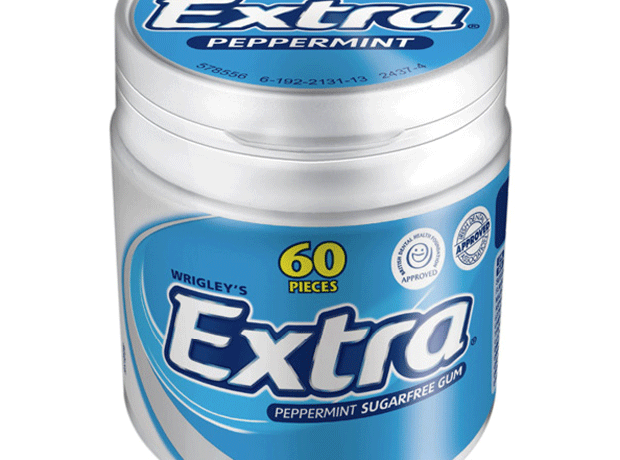
Innovation winners
Wrigley
- Rank: 61
- Adapted well to new European health legislation and market trends towards healthier, functional foods with NPD such as Extra Ice. As a result, the company has enjoyed double-digit revenue growth (18%).
William Jackson
- Rank: 80
- NPD and marketing campaigns to grow the higher-margin retail business - in particular the Aunt Bessie’s brand - has paid off with good revenue growth (9%) and improved margins (1.7%).
Bettys & Taylors
- Rank 101
- Driven sustained, double-digit growth through the recession (13% in latest financial year), turning Yorkshire Tea into a major national brand through NPD and marketing focus, whilst growing profits (7.6%).
McCambridge
- Rank: 114
- Negotiated a successful profit turnaround (+4 percentage points) through operational improvements and focus on the higher-margin Soreen part of the business, which has enjoyed strong revenue growth.
Fenmarc
- Rank: 140
- Enjoyed successive years of revenue growth and recent margin improvement (1.4%), partially through a PR push promoting the exclusive ‘Rudolph’ potato.
“UK food and drink companies will certainly be hoping that 2012 marked the bottom of the profit dip,” says Hayllar. “With improving consumer spending conditions in the UK, and commodity prices coming down, producers should start to see some of the recent pressures ease. In fact, that’s starting to flow through in some of the most recent results.”
While OC&C’s research suggests UK plcs have been affected more heavily than UK subsidiaries, or family or private equity owned food and drink suppliers in 2012, the most recent financial statements of leading listed companies - such as Britvic, Premier Foods, ABF, Greencore, Dairy Crest, Cranswick and Hilton Food Group - support forecasted margin improvement, with some increases already recorded, Hayllar adds.
The recovery is by no means limited to the PLCs however. And the bigger question is over the mix, as the power struggle continues between brands and own label while smaller producers continue to fight their corner.
“Whether big brands can reassert their old muscle or smaller brands and unbranded players will continue to outperform will be a key aspect to watch as the recovery takes hold. Beyond the UK market the increasing globalisation of the food industry should continue to provide new opportunities as well as new competitive threats for UK producers.” A fascinating and exciting period beckons ahead.
Read the full OC&C 150 table here










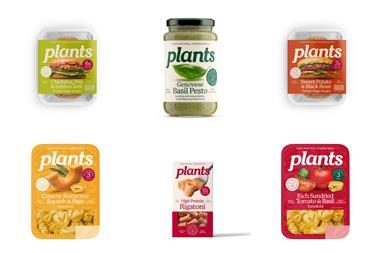
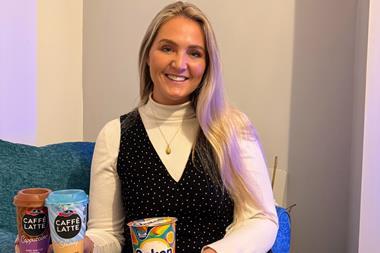


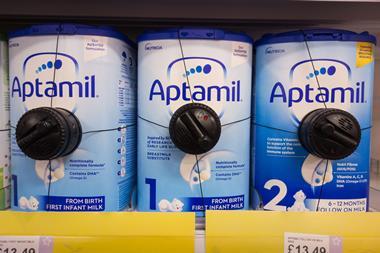

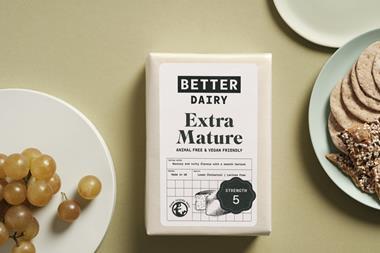



No comments yet